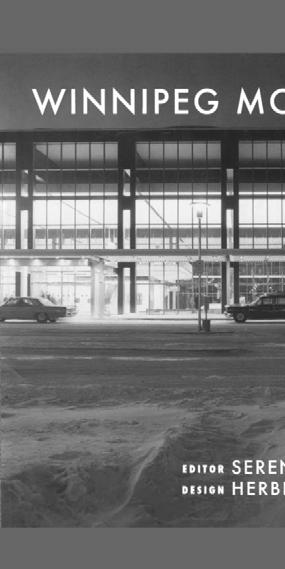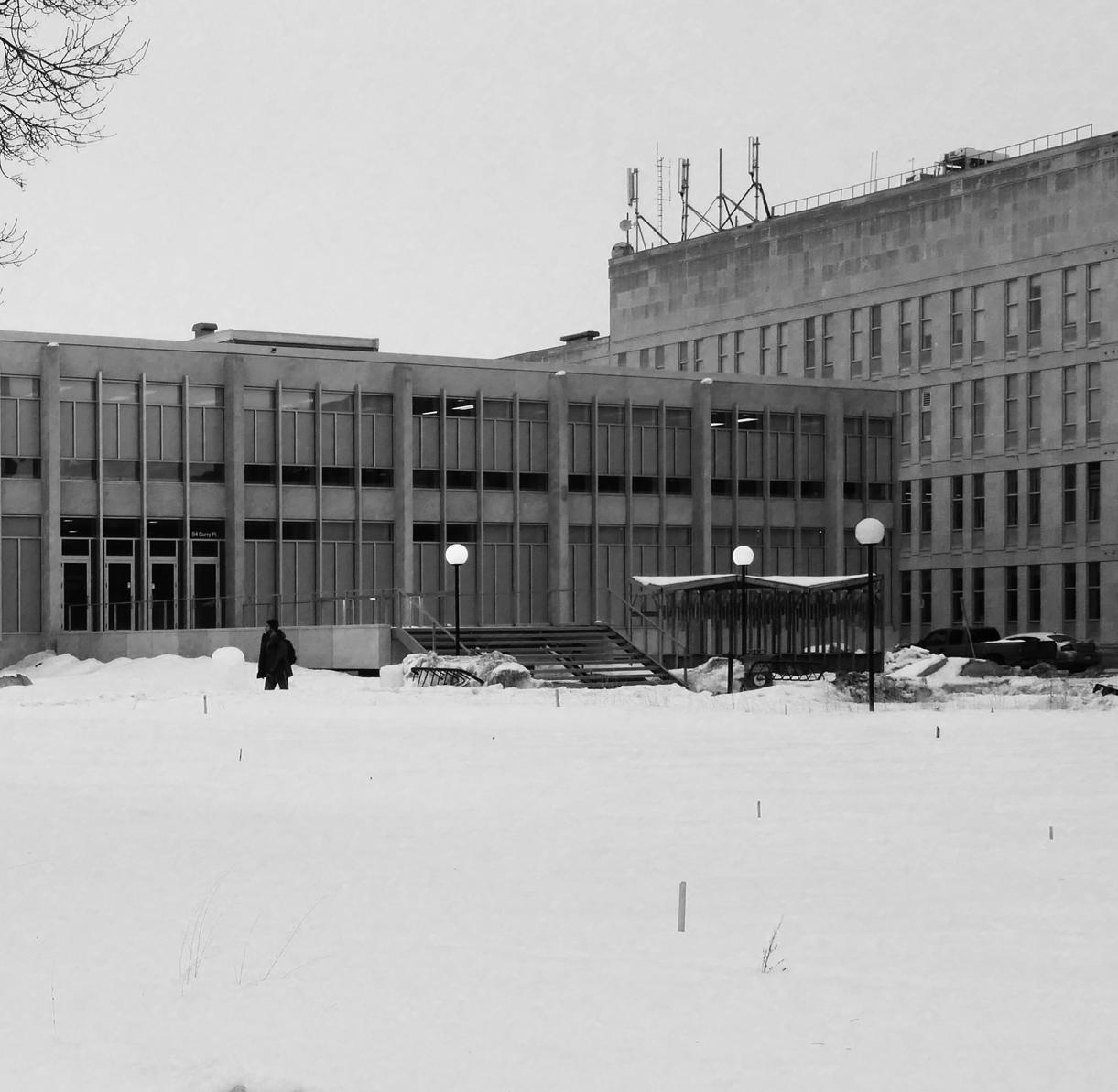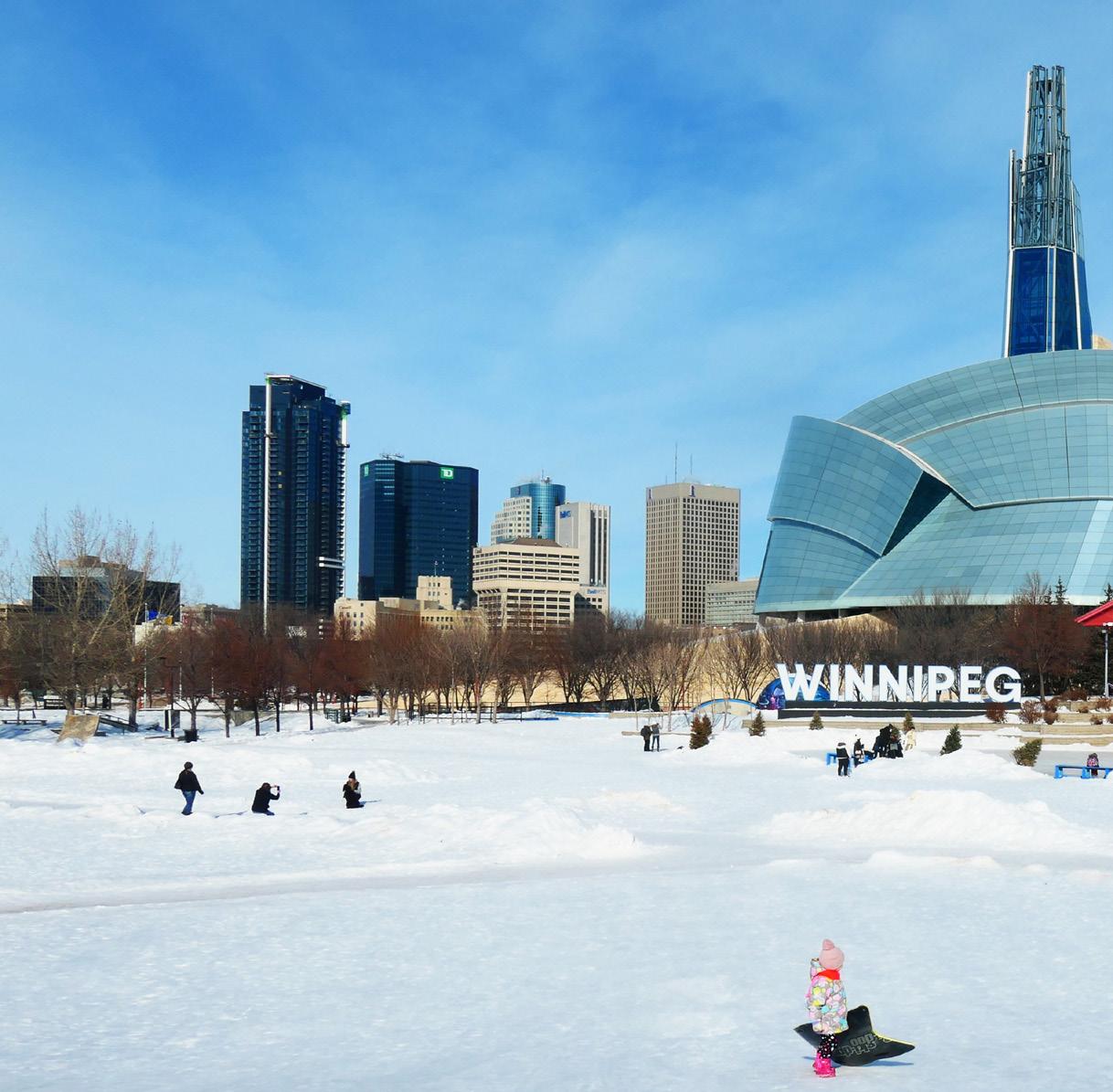WINNIPEG










WINNIPEG
Winnipeg is the capital of the Canadian province of Manitoba. Its heart is The Forks, a historic site at the intersection of the Red and Assiniboine rivers, with warehouses converted to shops and restaurants, plus ample green space dedicated to festivals, concerts and exhibits. Nearby, the Exchange District is known for its well-preserved, early 20th-century architecture and numerous art galleries. (Wikipedia)
THE BOOK
This was a small collection of photos from Winnipeg’s first visit. These pictures were taken to memory of the city.
I was inspired to travel by a quote by the Dalai Lama “Once a year, go someplace you’ve never been before.”
When I decided to study in Canada several years ago, the first one I searched for was Manitoba (Winnipeg). That’s the best place for international students who are able to afford the tuition fees and living costs. Further, working after you finish a study program makes it easier to obtain permanent residence. Unluckily, I moved to Toronto to study because I could not find the program I needed at the time. My search for it five years later led me to its discovery.
Among my favorite cities, Winnipeg holds a special place. My first intended move to Canada was to that city. Also the place, Anh Cuong lived and worked in before moving to US. The city he suggested I move to in order to get PR when I was having difficulties in Toronto. The place Anh Dat got his first architectural job in Canada. The place where the story’s family uncle Ted shared. This is the story of Vietnamese boat people who find freedom. Of course, Winnipeg, where my friend Thanh is studying and pursuing the Nobel Prize in Physics at Manitoba University.
The city was very interesting and I would like to thank Thanh for taking me around. Moreover, I Would like to thank Xuan, who introduced me the “Canoo”. This application allowed me to enter all museums and galleries for free.



 Taken by Thanh Khang Ly
Taken by Thanh Khang Ly
BOOM TOWN, 1870S -1910
Winnipeg was a bustling town in its early days - the population exploded, and new business popped up daily as land was bought and sold. Some people lost everything, while others prospered
CHICAGO OF THE NORTH, 1900 -1940
By 1913, winnipeg was Canada’s third largest city. The confidence in growing companies led business leaders to build early skyscrapers as offices. Steel frames made them lighter, stronger, and taller. Many of these buildings still stand in downtown Winnipeg.
Winnipeg is always changing - shaped by people, nature, and world events.


MODERNISM, 1950 -1980S

The modern world took over Winnipeg in the 1950s. Post-war prosperity led to the replacement of many buildings. Glass towers soon dominated downtown.

LOCAL INSPIRATION, 1968 -2000S
After the Modernist boom of the 1950s and ‘60s, many Winnipeggers developed a renewed appreciation for historical architecture. People started to restore heritage buildings instead of demolishing them. Architects began using traditional designs or including parts of old buildings inside new ones.
ART DECO
Art Deco, short for the French Arts Décoratifs, and sometimes just called Deco, is a style of visual arts, architecture, and product design, that first appeared in France in the 1910s (just before World War I), and flourished in the United States and Europe during the 1920s and 1930s. Through styling and design of the exterior and interior of anything from large structures to small objects, including how people look (clothing, fashion, and jewelry), Art Deco has influenced bridges, buildings (from skyscrapers to cinemas), ships, ocean liners, trains, cars, trucks, buses, furniture, and everyday objects like radios and vacuum cleaners.
BEAUX-ARTS

This style was popular during the first three decades of this century, and it was style primarily of French origins. Facades are symmetrical, and plans are based upon a progression of symmetrically disposed, functionally arranged spaces. The decorative features are classical, especially the orders, and are executed to achieve a monumental effect.
CHICAGO SCHOOL
The influence of the Chicago School, seen in urban high-rise buildings of the 1890s to the 1920s, is characterized by the gridlike organization of their facades. The elevations are usually divided into three sections comprising of base, middle, and attic storeys, and are capped by a massive cornice. The height of these buildings was made possible by the perfection of metal frame and reinforced concrete construction, and the introduction of the elevator. Usually these buildings had masonry exteriors with highly sculptural details.
GOTHIC
Gothic architecture (or pointed architecture) is an architectural style that was prevalent in Europe from the late 12th to the 16th century, during the High and Late Middle Ages, surviving into the 17th and 18th centuries in some areas. It evolved from Romanesque architecture and was succeeded by Renaissance architecture. It originated in the Île-de-France and Picardy regions of northern France. The style at the time was sometimes known as opus Francigenum; the term Gothic was first applied contemptuously during the later Renaissance, by those ambitious to revive the architecture of classical antiquity. The defining design element of Gothic architecture is the pointed or ogival arch. The use of the pointed arch in turn led to the development of the pointed rib vault and flying buttresses, combined with elaborate tracery and stained glass windows.
NEO-CLASSICAL
Neoclassicism appeared in Canada in the 1820s and continued until the 1860s. Neoclassicism entailed use of decorative motifs taken directly from Roman and Greek classical architecture, in particular the use of acanthus leaves, baseless Doric columns, antique Ionic columns, earred trim, and a prominent entablature. Neoclassicism, a European architectural style of both English and French origins, treated surfaces in a stark manner, eliminating window surrounds and using channelled masonry, blind arcades, flattened rusticated storeys, and stringcourses.




Manitoba Agricultural College
1911-1913 | Neoclassical Samuel Hooper - Victor Horwood 66 Chancellors Circle







Curry Building
1915 | Gothic
John Danley Atchison
227-249 Portage Avenue






Manitoba Telephone System Building
1930-1931 | Art Deco
Alexander Melville
166 Portage Avenue East


Great-West Life Building
1909–1911 | Beaux-Arts
John D. Atchison
177 Lombard Avenue
Grain Exchange Building
1906–1908 | Sullivanesque
Darling - Pearson
167 Lombard Avenue











Union Bank Tower
Renaissance Revival
1904 Tower | 1921 Annex| 2013 Addition
1904, Frank Darling and John Pearson
1921 Annex, Northwood and Carey
2013 Addition, Prairie Architects
166 Portage Avenue East

Winnipeg’s Exchange District was designated a national historic site in 1997 because:

• it illustrates the city’s key role as a centre of the grain and wholesale trade, finance and manufacturing in the historically important period in western development. - between 1880 and 1913, the period during wich Winnipeg grew to become the gateway to Canada’s West and the region’s metropolis.
• the district, which has clear boundaries and largely excludes post-1913 structures, contains a range of architecturally significant built resources which speak to the city’s key economic role in the West and the collective character of these built resources is distinct and relatively intact.
Cultural Resources:

• Buildings Street Elements
• Streetscapes
Archaeological Resources
• Historic Objects

NOSTALGIA
I missed Saigon (Vietnam) when I walked on the street of Winnipeg. I was reminded of Saigon’s architecture by the language of Winnipeg’s Modernist architecture.
These books are great for anyone who enjoys concrete buildings and modern architecture. My luck was that I got the chance to visit some buildings in the books, so I was able to look, see, observe, feel and remember them.
Published Sources:

Winnipeg Architecture Foundation

• Winnipeg Modern Heritage Conservation Winnipeg
• Manitoba Centennial Centre Corporation
Wikipedia
MODERNIST ARCHITECTURE
Modern architecture, or modernist architecture, was an architectural movement or architectural style based upon new and innovative technologies of construction, particularly the use of glass, steel, and reinforced concrete; the idea that form should follow function (functionalism); an embrace of minimalism; and a rejection of ornament. It emerged in the first half of the 20th century and became dominant after World War II until the 1980s when it was gradually replaced as the principal style for institutional and corporate buildings by postmodern architecture. (Wikipedia)
BRUTALIST ARCHITECTURE
Brutalist architecture is an architectural style that emerged during the 1950s in the United Kingdom, among the reconstruction projects of the post-war era. Brutalist buildings are characterized by minimalist constructions that showcase bare building materials and structural elements over decorative design. The style commonly makes use of exposed, unpainted concrete or brick, angular geometric shapes, and a predominantly monochrome color palette; other materials, such as steel, timber, and glass, are also featured.. (Wikipedia)






 Winnipeg Civic 1962–1963 | David Thordarson 510 Main
Winnipeg Civic 1962–1963 | David Thordarson 510 Main
 Civic Centre
Modernist
- Bernard Brown Main Street
Civic Centre
Modernist
- Bernard Brown Main Street

Concert Hall
Modernist
Blankstein Russell and Partners

Searle and Associates
Main Street

MCCC ASSETS AND DISTRICT BOUNDARY, 2016
A Centennial Concert Hall
• B Manitoba Museum
C Steinkopf Garden
• D Extension Services Building
• E Tom Hendry Warehouse Theatre
• F Royal Manitoba Theatre Centre
• G Artspace
• H Surface Parking Lot
Source: Manitoba Centennial Centre Corporation

The Monitoba Museum
1968-1979 | Modernist
Green Blankstein Russell
Moody Moore and Partners
Smith Carter Searle and Associates
190 Rupert Avenue


The Monitoba Museum
1968-1979 | Modernist
Green Blankstein Russell
Moody Moore and Partners
Smith Carter Searle and Associates
190 Rupert Avenue



Royal Manitoba Theatre Centre

1969-1970 | Brutalist
Robert Kirby - Allan Waisman
174 Market Avenue
Canadian Wheat Board Building
1928 | Art Deco
1962 | Modernist
Northwood & Chivers - Smith Carter Searle
423 Main Street


Radisson Hotel Winnipeg Downtown
1969-1970 | Brutalist
Number Ten Architectural Group
Leslie F. Girling & Associates
288 Portage Avenue

Richardson Building
1967–1969 | Modernist
Smith Carter Searle
1 Lombard Avenue | 375 Main Street
The Fairmont
1968–1970 | Modernist

Smith Carter Searle in association with Skidmore Owings & Merrill
2 Lombard Place
Richardson Centre Parkade
1967–1969 | Modernist
Smith Carter Searle
120-136 Lombard
Source: Winnipeg Architecture Foundation
The Fairmont
1968–1970 | Modernist
Smith Carter Searle in association with Skidmore Owings & Merrill
2 Lombard Place

Royal Bank Building
1965–1966 | Modernist
Smith Carter Searle Associates
Moody Moore and Partners
220 Portage Avenue






 Radisson Winnipeg
200 Graham Avenue
Kensington Building Limited
360 Main
IRCC
300 Main
Radisson Winnipeg
200 Graham Avenue
Kensington Building Limited
360 Main
IRCC
300 Main






John A. Russell Building

1958-1959 | Modernist
James Donahue - Grant Marshall
84 Curry Place







 Learning Centre Gallery (WAG)
Learning Centre Gallery (WAG)




 Canadian Museum
Canadian Museum

 Canadian Museum for Human Rights
Canadian Museum for Human Rights


In 1975, the bloodshed of Vietnam War is finally over, but a new era of hardship is beginning. Over the next several years, hundreds of thousands of Vietnamese flee persecution under the new communist regime.






 Market Food Hall
Architectural Group
Market Food Hall
Architectural Group



Boniface Cathedral

Haskell (1905-1908)
Gaboury (1969-1972)
la Cathédrale





 An 1821 painting of winter fishing on the ice of the Assiniboine and Red rivers. Fort Gibraltar was erected in 1809. (Wikipedia)
An 1821 painting of winter fishing on the ice of the Assiniboine and Red rivers. Fort Gibraltar was erected in 1809. (Wikipedia)
WINNIPEG
1873
Winnipeg City Hall
Manitoba Legislative Building
Exchange District
Union Station
Manitoba Museum
Canadian Museum for Human Rights
Winnipeg Art Gallery
Centennial Concert Hall
Millennium Library
Portage Place
CF Polo Park
The Forks Market
Canada Life Centre
RBC Convention Centre Winnipeg
Shaw Park
Assiniboine Park Zoo
TORONTO
1793
New City Hall
Legislative Assembly of Ontario

Financial District
Union Station
Royal Ontario Museum
Aga Khan Museum
Art Gallery of Ontario
Roy Thomson Hall
Toronto Reference Library
CF Toronto Eaton Centre
Yorkdale Shopping Centre
The Distillery Historic District
Scotiabank Arena
Metro Toronto Convention Centre
Rogers Centre
Toronto Zoo
The Forks National Historic Site
Fort York National Historic Site
•
TERRITORIES | 3
•
•
PROVINCES | 10
• Alberta | -
• British Columbia | Vancouver (2021)
• Manitoba | Winnipeg (2023)
• New Brunswick |Newfoundland and Labrador | -
• Nova Scotia |Ontario | Toronto (2018 - Present) | Ottawa (2019, 2021)
• Prince Edward Island | -
Quebec | Montreal (2019, 2020, 2022) | Quebec (2020)
• Saskatchewan | -
RESIDENT POPULATION OF CANADA | 2022

(in 1,000s) - Source Statista
•
•



 Taken by Thanh Khang Ly
Taken by Thanh Khang Ly
Whenever I walk in a strange place, I always recognize freedom clearly. We all need freedom in order to be happy, it is the only condition for that to happen.

Freedom for me consists of four elements: free from money, free from stuff, free to live anywhere, free from worrying(health, safety). And day to day, I work towards achieving it.

